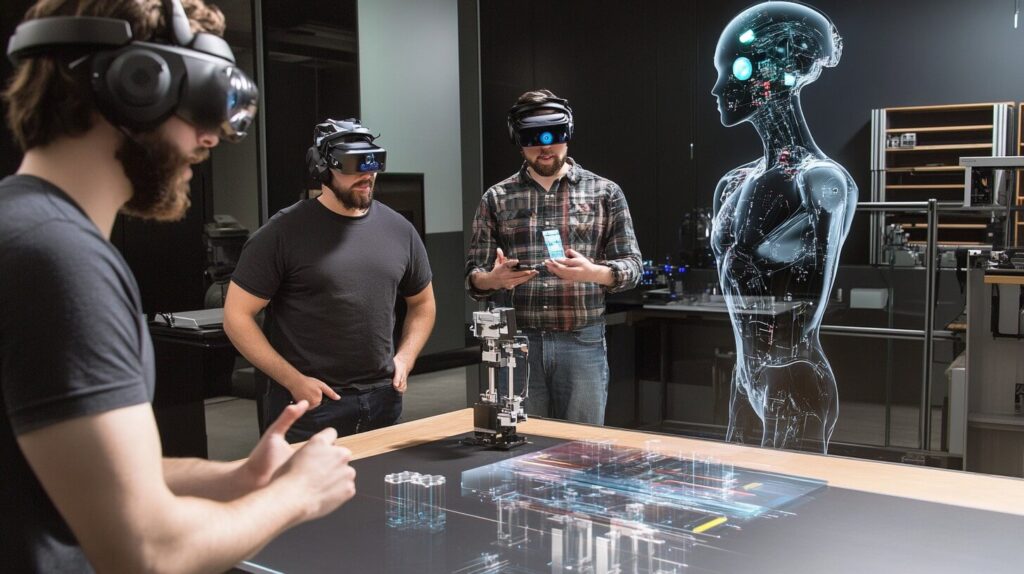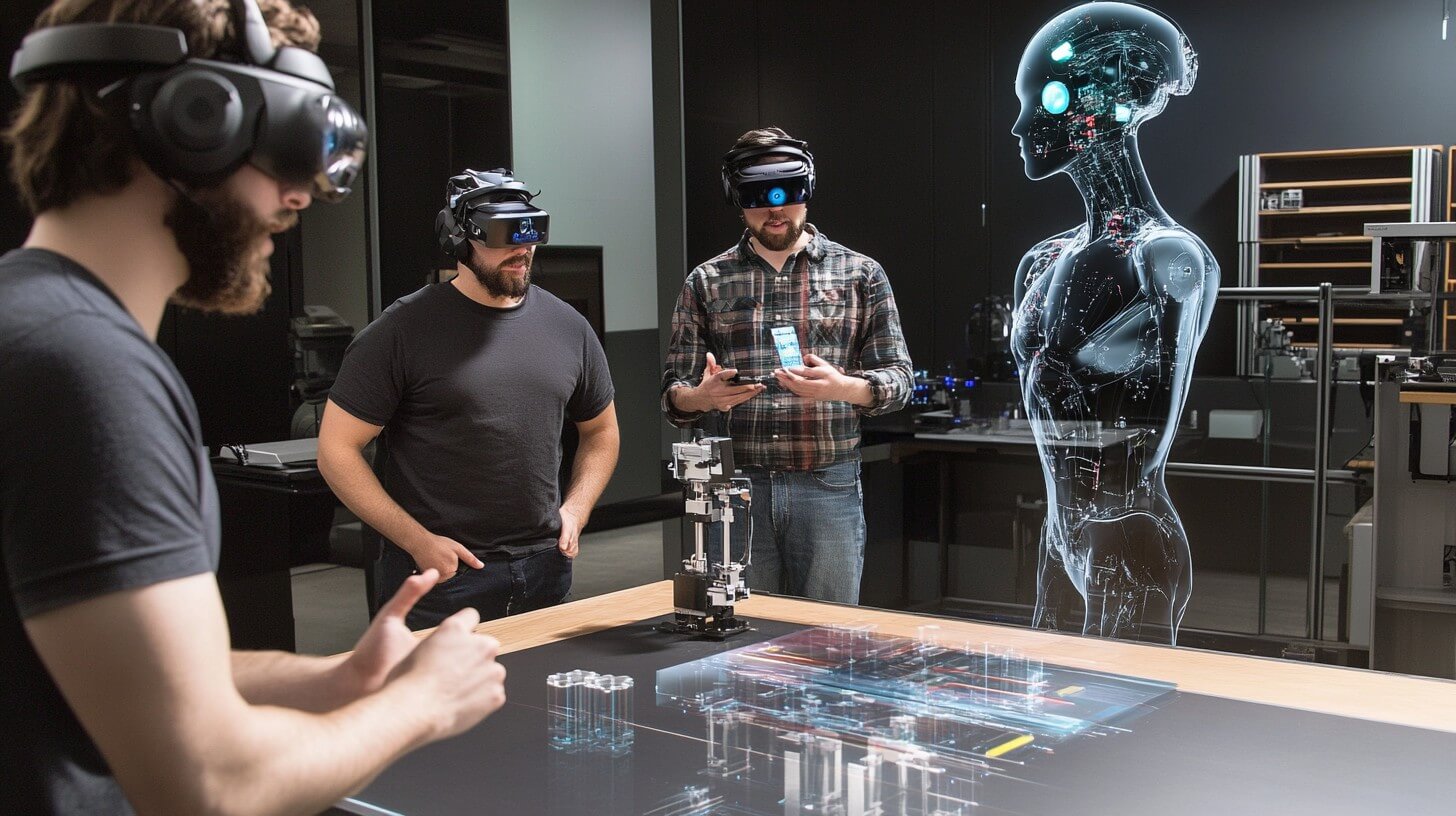Switzerland, France, and Germany are home to vibrant tech innovation districts. These regions form a dynamic network that fosters groundbreaking technologies, creative problem-solving, and international collaboration.
Moreover, these regions are leading the charge in areas such as biotech, AI, automotive, and clean energy. Simultaneously, they are maintaining their unique cultural identities.
However, the question arises: how do these diverse cultures manage to bridge their differences and, consequently, contribute to a collective technological future?
In this guide, we’ll explore the key aspects of these innovation hubs. We’ll also answer common questions about collaboration between Switzerland, France, and Germany. Finally, we’ll look at how these countries are shaping the future of technology.
Along the way, we’ll offer practical insights, provide relatable examples, and share personal stories to make the concepts more accessible.

What Makes the Swiss, French, and German Tech Hubs So Special?
Before we delve into the details of how these countries collaborate, let’s first take a look at the individual strengths of each region.
Each nation brings something unique to the global tech scene. Understanding their individual identities helps us appreciate how they collaborate.
Switzerland: Precision and Stability
Switzerland is renowned for its precision engineering, stable economy, and high-quality manufacturing.
This reputation extends to its tech ecosystem, where industries like finance, pharmaceutical research, and high-tech manufacturing dominate.
- Pharmaceutical Innovation: Switzerland is home to some of the world’s biggest pharmaceutical companies, including Novartis and Roche, making it a major player in biotech. The Swiss tech scene thrives on partnerships between universities, research institutions, and private companies, which fuel continuous advancements in drug development and medical devices.
- High-Tech Manufacturing: Switzerland’s focus on high-quality manufacturing has also led to innovations in areas like robotics and precision machinery, which often serve as components for larger industries in other parts of Europe.
Switzerland is known for maintaining a close-knit and highly educated workforce. The country’s long-standing culture of neutrality and political stability offers a safe environment for innovation to flourish.
As a result, many international companies look to Switzerland for the creation of tech products that require exacting standards and unparalleled reliability.
France: Creativity Meets Digital Transformation
France’s tech ecosystem has historically been defined by creativity and its commitment to supporting digital transformation.
The French government has made significant investments in fostering a digital economy, focusing on artificial intelligence, software development, and digital innovation.
- AI and Machine Learning: The French government has identified AI as a strategic growth area, and the country boasts numerous AI startups and research institutions. Paris, in particular, has become a hub for AI, machine learning, and data science. For instance, tech giants like Google and Facebook have established research facilities in the city.
- Digital Startups: France is home to a thriving startup scene, particularly in industries related to fintech, e-commerce, and mobile technology. The country’s focus on fostering entrepreneurship has led to the creation of many tech incubators and accelerators. This makes it an attractive destination for startups looking to scale.
What sets France apart is its blend of creativity and digital sophistication.
French engineers and entrepreneurs have a strong appreciation for artistic expression, which greatly influences the development of tech products.
Whether it’s designing user-friendly apps or creating immersive digital experiences, French innovation focuses on both form and function.
Germany: Engineering Excellence and Industry Leadership
Germany’s tech ecosystem is built on its legacy of engineering and precision manufacturing.
Known for its high-quality industrial products, the country has led the way in integrating technology into manufacturing. This is especially true in automation, robotics, and automotive engineering.
- Automotive Innovation: Germany is home to some of the world’s most iconic automotive brands, including Mercedes-Benz, Audi, and BMW. These companies have heavily invested in autonomous driving technology, electric vehicles, and in-car digital experiences. German automakers collaborate with a wide array of tech firms, ranging from AI startups to semiconductor manufacturers, to stay ahead in the rapidly evolving automotive space.
- Industry 4.0: Known as Industry 4.0, Germany’s focus on automation and digital manufacturing has revolutionized traditional industries. The concept of “smart factories” and connected machines is central to Germany’s manufacturing innovation, allowing companies to optimize production processes through data-driven technologies.
Germany’s tech scene is characterized by its emphasis on efficiency, reliability, and practicality.
German innovators are focused on developing solutions that enhance productivity and performance. This includes advancements in robotics and leveraging AI to optimize industrial processes.
Collaboration Across Borders: How the Swiss, French, and German Tech Ecosystems Work Together
At first glance, the three tech ecosystems might seem distinct—each with its own cultural identity and areas of focus.
As the lines between these countries’ tech ecosystems continue to blur, cross-border collaboration is becoming the norm, not the exception.
Let’s explore some of the key ways in which these tech districts come together to drive innovation.
Biotech and Healthcare: A Swiss-French Powerhouse
One of the most powerful examples of cross-border collaboration is in the field of biotech and healthcare.
The proximity between Switzerland and France has created a natural partnership between Swiss pharmaceutical companies and French research institutions.
Switzerland, known for its advanced biotech sector, often collaborates with France’s renowned medical research centers to drive healthcare innovation.
Example:
- Swiss-French Biotech Partnerships: The Swiss-based pharmaceutical giant Novartis has worked closely with French medical researchers to develop new therapies for cancer. Research projects funded by both nations have led to groundbreaking treatments that are now being implemented across Europe.
The relationship between the two countries is strengthened by shared border areas, like Geneva and Lyon, where joint research centers and collaborations are common.
This results in a seamless integration of Swiss precision and French creativity, driving innovations that benefit both nations and the global healthcare market.
AI and Software Development: The French-German Connection
Another area of successful collaboration is, for example, the development of artificial intelligence and software solutions.
Furthermore, French and German firms are increasingly working together to integrate AI into traditional industries, such as automotive and manufacturing.
- French AI Startups + German Manufacturing Giants: Startups in France, particularly in Paris, are leading the way in AI-driven solutions for business, finance, and healthcare. These startups often partner with German companies, particularly in the automotive and industrial sectors, to integrate AI into manufacturing processes, vehicle automation, and logistics.
Example:
- AI-Powered Automotive Innovation: French AI firm Valeo collaborates with German car manufacturer BMW to integrate artificial intelligence into self-driving vehicles. This partnership allows for the development of safer, smarter vehicles that are transforming the future of transportation.
This collaboration highlights the synergy between France’s digital transformation and Germany’s focus on industrial tech innovation districts.
The combination of France’s cutting-edge AI and Germany’s precision engineering is a powerful force shaping the future of many industries.
Automotive Innovation: Switzerland’s Role in the German Automotive Revolution
Although Switzerland is not home to major automotive manufacturers, its highly skilled workforce and focus on high-tech manufacturing make it an important partner for German car makers.
Swiss companies provide key components for German automakers, from precision parts to software and electronic systems.
- Swiss Expertise in EV Infrastructure: Swiss companies have been instrumental in the development of charging infrastructure for electric vehicles (EVs), a key area of focus for German car manufacturers like Mercedes-Benz and Volkswagen.
Example:
- Swiss-German Electric Vehicle Collaboration: Swiss tech company ABB is a global leader in EV charging solutions and has worked with German automakers to create efficient, fast-charging stations for electric cars. This partnership is helping to make electric vehicles more accessible to consumers across Europe.
The collaboration between Switzerland and Germany in the automotive sector is a great example of how different cultures can work together to advance technology while maintaining their respective areas of expertise.
Overcoming Cultural and Practical Challenges in Cross-Border Tech Collaboration
While the tech ecosystems of Switzerland, France, and Germany thrive through cross-border collaboration, companies must navigate certain challenges to work together effectively.
Understanding these challenges can help businesses and entrepreneurs make the most of international opportunities.
Language Barriers and Communication Challenges
The most obvious challenge in any cross-border collaboration is language.
While English is the primary language for most international business, the distinct languages of Switzerland (German, French, Italian), France (French), and Germany (German) can pose challenges.
Tip:
If you’re planning to collaborate across these borders, then learning the basics of each country’s language can, without a doubt, go a long way in building rapport and establishing trust with partners.
Even simple greetings in the local language can create goodwill.
Business Etiquette and Cultural Differences
Each country, in fact, has its own approach to business. Germans, for example, are known for their punctuality and formal communication style, whereas the French, on the other hand, value creativity and tend to favor indirect communication.
wiss professionals tend to be reserved and focused on precision.
Tip:
Understanding the business etiquette of each country can help avoid misunderstandings and build strong, productive relationships.
When dealing with French partners, be prepared for discussions to be more conversational, while with German colleagues, focus on facts and efficiency.

Legal and Regulatory Differences
Each country has its own set of rules regarding intellectual property, business regulations, and labor laws.
Navigating these differences can be tricky for companies that want to expand across borders.
Tip:
It’s crucial to work with local legal experts or consultants who understand the intricacies of each country’s legal system.
This will help ensure that your collaborations stay on track and comply with local regulations.
Conclusion
The convergence of Swiss, French, and German tech innovation districts is not just a story of borders and industries coming together—it’s a testament to the power of cross-cultural collaboration.
Each country brings its own strengths, from Switzerland’s precision and stability, to France’s creativity and digital transformation, to Germany’s engineering excellence and industrial leadership.
By working together, they’re driving forward advancements in industries like biotech, AI, automotive, and more, creating a future where technology serves humanity in smarter, more sustainable ways.
As we’ve explored, this collaboration isn’t without its challenges. Language barriers, cultural differences, and regulatory variations can create obstacles, but the shared commitment to innovation and mutual respect makes overcoming them possible.
For businesses, startups, and entrepreneurs, there’s a wealth of opportunities to tap into by embracing the unique attributes of each nation and fostering cross-border partnerships.
The future of technology in these three countries is bright, and it’s clear that when cultures and industries come together, they create something greater than the sum of their parts.
Whether you’re an entrepreneur looking to innovate or an investor exploring new opportunities, the Swiss, French, and German tech ecosystems provide a rich environment for growth, collaboration, and groundbreaking discoveries.
Now, it’s up to us to continue to bridge these cultural crossroads and take advantage of the limitless potential that lies ahead. The future of technology is waiting—let’s build it together.
Frequently Asked Questions
What makes Switzerland a global innovation leader?
Switzerland’s position as a global innovation leader stems from several key factors:
- High R&D investment: Switzerland invests 3.4% of its GDP in research and development, significantly above the global average.
- World-class education: Institutions like ETH Zurich and the University of Zurich produce top-tier talent and drive research.
- Strategic location: Situated in the heart of Europe, Switzerland provides easy access to other European markets.
- Multicultural environment: Switzerland’s diversity fuels creativity and innovation by bringing together various perspectives.
- Thriving startup ecosystem: The country boasts a high number of startups per capita, supported by government policies and strong venture capital.
How does the Swiss Innovation Park system work?
The Swiss Innovation Park is a national network of science parks organized through the Switzerland Innovation Foundation.
It consists of five main locations:
- Swiss Innovation Park Basel Area
- Swiss Innovation Park innovaare
- Swiss Innovation Park Zurich
- Swiss Innovation Park Biel/Bienne
- Switzerland Innovation Park Network West EPFL
These parks host various companies and organizations, from startups to multinational corporations, fostering collaboration and innovation across different sectors.
What are the key differences in innovation cultures between Germany, France, and Switzerland?
While all three countries have strong innovation ecosystems, there are some notable differences:
- Germany: Focuses on building AI innovation ecosystems in cities like Munich, Hamburg, and Berlin, with government support for prototype funding and community building.
- France: Emphasizes the “La French Tech” initiative, which aims to boost France as a startup nation and create a global network of French tech communities.
- Switzerland: Stands out for its multicultural and multilingual environment, which facilitates international collaboration and diverse perspectives in innovation.
How do these countries collaborate in Tech innovation districts?
Collaboration between these countries occurs through various channels:
- Cross-border initiatives: Programs like the Switzerland Innovation Park Basel Area, located in the tri-border region of Switzerland, France, and Germany, promote international cooperation.
- European projects: Joint initiatives and funding programs at the European level encourage collaboration between innovators from different countries.
- Startup support: Organizations like La French Tech Munich help French entrepreneurs establish and develop their businesses in Germany, fostering cross-cultural innovation.
What sectors are prominent in these Tech innovation districts?
The Tech innovation districts in Switzerland, France, and Germany focus on several key sectors:
- Switzerland: Biotech, medtech, digital health, personalized healthcare, healthtech, and industrial transformation.
- France: Digital technology, artificial intelligence, and deep tech startups6.
- Germany: Artificial intelligence, with a focus on developing AI innovation ecosystems in major cities.
All three countries also have strong presences in sectors such as fintech, cleantech, and advanced manufacturing, reflecting their diverse and dynamic innovation landscapes.



